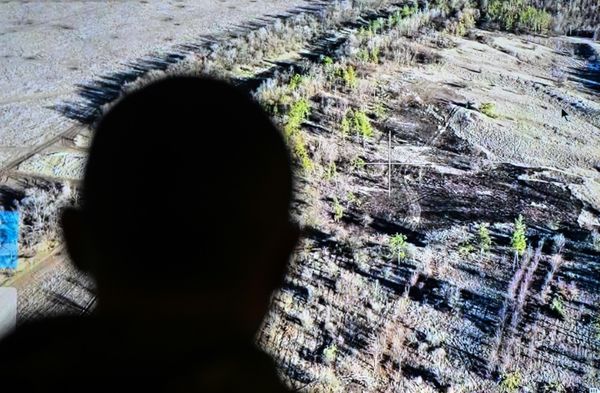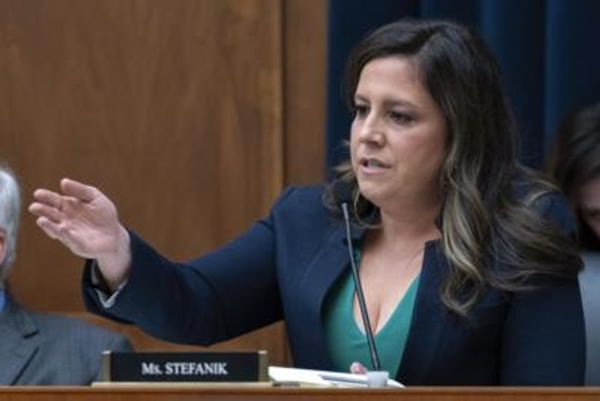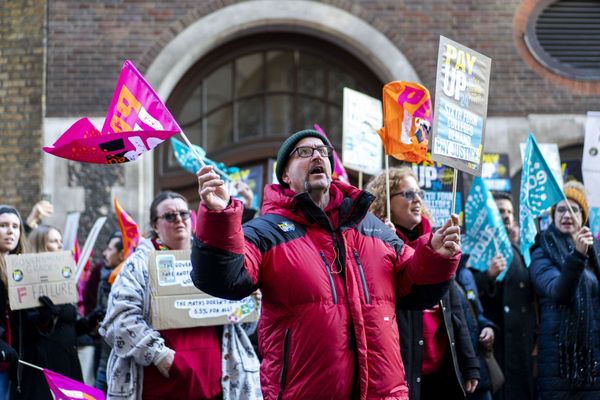
A pensive Shinzo Abe announced his resignation as the prime minister of Japan on Friday, ending an unprecedented run that produced some solid gains in the world’s third-largest economy, an unlikely bonding with U.S. President Donald Trump, and the building of a stronger defense force in the face of an increasingly powerful and assertive China.
While most leaders would tout their accomplishments, a somber and sometimes emotional Abe instead spoke about what had been left undone. “I apologize to the people from the bottom of my heart for having to leave the job amid the coronavirus pandemic while many policies are still halfway toward realization,” he said.
His sudden announcement, a surprise to even those close to the prime minister, creates an uncertain future for a country stranded between the rising animosity of its alliance partner the United States and its biggest trading partner, China. “Abe certainly leaves a big hole. Domestically, his stability-oriented populism currently has no follower. Internationally, the art of simultaneously improving and balancing relations with China and the U.S. can hardly be copied,” said Martin Schulz, the chief economist for Fujitsu, the Japanese IT group.
Yet despite his longevity in office—his over seven-year stint as prime minister was the longest ever—Abe was not a particularly popular figure in Japan. Critics said that he was a closet nationalist who never really accepted Japan’s multitude of apologies over World War II, and polls showed that the main reason for his sustained popularity was the lack of another candidate. That problem still lingers: Who comes next?
Abe’s departure was sudden, brought on by weakening public support for the government’s measures to counter the coronavirus and, more immediately, by his own health issues as his ulcerative colitis returned. The condition had cut short Abe’s first term as well from 2006 to 2007, when he was one of a string of short-term leaders in what looked like a permanent revolving door for Japanese prime ministers.
His return in 2012 to become Japan’s longest-serving prime minister ever was made possible by new medication that kept his condition under control, but Abe said at his news conference that the problems returned as he worked virtually every day through the spring and summer on how to handle the COVID-19 outbreak. The public showed little regard for his diligence, however. Recent polls showed that 58 percent of those surveyed were dissatisfied with the government’s program, which appeared to lurch between nonmandatory lockdowns and efforts more recently to actively encourage travel within Japan to help the rural economies badly hit by the economic downturn.
It is easy to see this as ingratitude given the fact that Japan has been spared the worst of the outbreak. Japan was among the earliest countries to be hit by the virus, including a shipboard outbreak that received global media attention with 712 passengers falling ill and 13 deaths, numbers that would barely be noticed in today’s tallies around the world. To date, there have been 1,226 fatalities attributed to COVID-19 in the country, a deaths per capita rate that is just 1.8 percent of the U.S. level. Severe lockdowns have been avoided, and while there has been a strong downturn, the jobless rate remains under 3 percent. Despite these positive figures, the general feeling has been that the low numbers are due to commonsense Japanese behavior such as mask-wearing and social distancing, rather than government actions. The coronavirus has also cost Tokyo its hosting of the Olympics this year, officially delayed till 2021—a blow for a prime minister who had thrown himself into the games’ organization.
In a bid to answer this criticism, Abe spent much of his news conference talking about the government’s progress in fighting COVID-19. Noting a government road map for the fall, when cases could again spike, he said that Japan could achieve the twin goals of keeping the virus in check while allowing the economy to again start growing.
On the economy, Abe can also point to real achievements—if not all he promised. When Abe came to power in 2012, Japan’s economy had been lurching along for more than 20 years since the collapse of the high growth of the bubble economy in 1990 and seemed to have no prospects for any improvements. Even as economic growth slumped, the Japanese yen had soared in value in what financial analysts called a “safe haven” effect. This in turn worsened the prospects for overseas trade, a core part of the country’s industrial base, especially in autos. Abe exuded confidence that he could turn things around, announcing that his economic policies would break from the incrementalism that had meant a slow pace of change unable to keep pace with a faster-changing global economy.
His “Abenomics” policy proved to be a moderate success, bringing back growth and helping to end the deflationary spiral that had been a long-term drag on the economy. The most successful area was in monetary policy, thanks to a newly appointed head of the Bank of Japan, Haruhiko Kuroda, who launched a massive injection of money into the economy, ignoring conventional economic theory that such a move would eventually lead to uncontrollable inflation. Kuroda was ahead of his time, presaging the era of negative interest rates that came to the eurozone and the announcement this week by the U.S. Federal Reserve that it would put growth ahead of inflationary concerns. Other elements of the program were less successful. Government regulatory reforms have proceeded but without any great fanfare and with little visible enthusiasm from Abe in recent years.
But a clear Abe victory was in his careful handling of the U.S. presidential election of 2016, hedging any bets on a Hillary Clinton presidency with preelection outreach to Donald Trump. It of course proved to be a prescient move, and Abe was the first world leader to meet the president-elect that November, bringing with him an expensive golf club as a gift. (It turned out that the driver, while made in Japan, was produced by a Chinese-owned company, demonstrating the economic challenges facing both Japan and the United States.) Abe made regular visits to see Trump, with golf not surprisingly an important method of bonding. Abe was always deferential and polite, even though Trump often declined to return the favor. “I’ll talk to Prime Minister Abe of Japan and others—great guy, friend of mine—and there will be a little smile on their face. And the smile is, ‘I can’t believe we’ve been able to take advantage of the United States for so long.’ So those days are over,” Trump said in 2018. Abe, realizing bigger goals were at stake, would refuse to take the bait.
In an “America first” world, Abe’s biggest success came in the area of international trade. Japan had long been known as a protectionist country and, like China today, had traditionally promoted its exports while taking various measures to ensure the success of domestic brands at home. Abe, however, threw the gates wide open, even in the area of agriculture, traditionally one of the most protected areas, as exemplified by the 788 percent tariff on imported rice.
Just when the United States turned its back on the Trans-Pacific Partnership, arguably Trump’s biggest failure in relation to containing China, it was Abe who, against all odds, managed to salvage the agreement. With an absence of U.S. leadership, Abe managed to bring together the other countries, creating an 11-nation free trade zone that goes beyond the traditional realm of trade tariffs to encompass such areas as intellectual property rights, the rights of workers, and the environment. He didn’t stop there, moving to finalize a seemingly endless set of negotiations with the European Union to create the largest free trade pact in the world.
One of Abe’s biggest disappointments had been a failure to revise Japan’s postwar constitution, in which the country renounces the use of force to settle international disputes and bans any army or navy. That has not stopped Japan from creating a so-called Self-Defense Force that is considered one of the most powerful military forces in the world. Like many of his predecessors, Abe wanted to shed the restrictions of the constitution, which had been drafted by American experts during the occupation following World War II. Despite its foreign origins, the document has never been amended. This suits a Japanese populace that still remembers the militarism that led to a brutal prewar regime, but it has long offended the conservatives within the ruling party who seek Japan’s return to a “normal country.” At the same time, Abe pushed up military-related spending and expanded the role of the Self-Defense Forces.
With Abe’s departure, the attention shifts, of course, to his successor. Given the dominant role of his Liberal Democratic Party, the decision will come from their selection of a new party leader. It will be the party factions, not the voters, who determine the country’s next leader. The likely candidates represent a group of plutocrats in the upper echelons of the party, which may well return Japan to the revolving door of nameless faces ruling in brief succession. The country may end up looking back with nostalgia at a leader few loved but who was able to show the world a Japan that was a model of reasonability at a time of global dysfunction.







